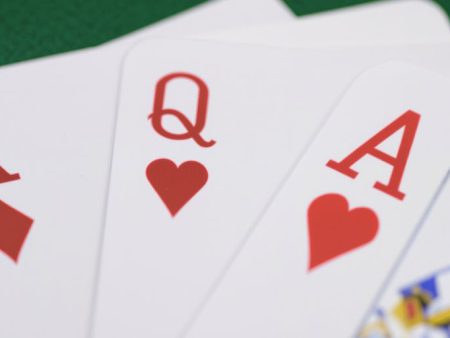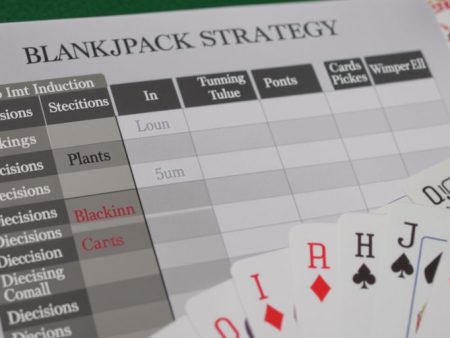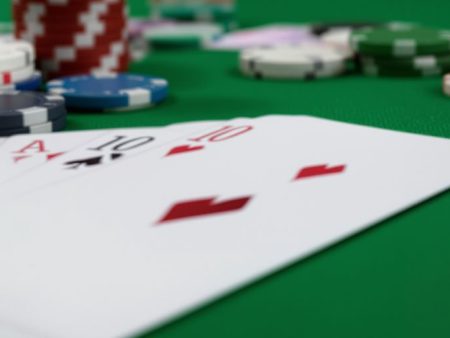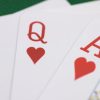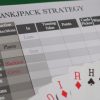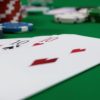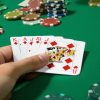Blackjack is a game that seems pretty simple on the surface, right? You get cards, the dealer gets cards, and you try to get closer to 21 without going over. But if you’ve ever played, you know there’s more to it than just luck. Understanding how to calculate blackjack odds is really what separates the casual players from the ones who consistently do well. It’s not about magic, it’s about knowing the numbers. This guide is going to break down how you can figure out those odds and make smarter moves at the table.
Key Takeaways
- Knowing the value of each card – from number cards to the tricky Ace – is the first step in understanding blackjack.
- The game involves basic actions like hitting (taking another card) or standing (keeping your current hand), and knowing when to do each is key.
- Advanced moves like doubling down, splitting pairs, and understanding insurance bets can give you an edge if used correctly.
- Dealer rules, table payouts (like 3:2 vs. 6:5), and the casino’s house edge all affect your odds, so pay attention to them.
- Using strategy charts and managing your money wisely are essential tools for improving your chances and playing responsibly.
Understanding Blackjack Card Values

Alright, let’s get down to the nitty-gritty of Blackjack. Before you even think about hitting or standing, you gotta know what your cards are worth. It’s not rocket science, but messing this up means you’re already behind. Seriously, it’s the absolute foundation. Get this wrong, and your whole game is shaky.
The Face Value of Number Cards
This is the easy part, honestly. Cards from 2 through 10? They’re worth exactly what they say on them. A 7 is worth 7 points. A 3 is worth 3 points. Simple, right? No tricks here, just straightforward value. It’s like counting your fingers, but with cards.
Ten Points for Face Cards
Now, the fancy cards – the Jacks, Queens, and Kings. These guys all look different, but they’re treated the same when it comes to points. Each one of them is worth a solid 10 points. So, a Jack, a Queen, or a King, it doesn’t matter which one you get, they all add up to 10. Makes sense, they’re the most common cards to get a 10 with, besides the actual 10 card.
The Versatile Ace: One or Eleven
The Ace is where things get a little interesting, and frankly, pretty cool. This card is a real chameleon. It can be worth either 1 point or 11 points. Which value does it take? Whichever one helps your hand the most. If you have an Ace and a 6, that’s usually 17 points (Ace as 11, plus the 6). But if you have an Ace and a 10, that’s a Blackjack, and the Ace is counted as 11. If you have a 7 and an Ace, and then draw a 9, your Ace would have to be a 1 to avoid busting (7 + 1 + 9 = 17). It’s all about making the best possible hand without going over 21. This flexibility is why Aces are so powerful.
Core Blackjack Mechanics and Gameplay
Alright, let’s get down to the nitty-gritty of how a game of blackjack actually plays out. It’s not just about getting cards; there’s a whole flow to it. First things first, you gotta find a seat at the table. You’ll see a bunch of people, and the dealer is right there, ready to deal. They give everyone two cards, usually face up so you can see what you’re working with. The dealer gets two cards too, but one is face down – that’s the mystery card! The whole point is to get your cards as close to 21 as possible, but you absolutely cannot go over. Busting means you lose, plain and simple. After you get your initial two cards, it’s decision time. Do you want another card, called a ‘hit,’ or are you happy with what you have and want to ‘stand’? This choice is huge, and it depends on your hand and what the dealer is showing. It’s a real nail-biter sometimes, you know? You’re just hoping you don’t go over 21. The dealer has their own rules they have to follow, which is pretty neat because it makes their actions predictable, sort of. They have to hit if their total is 16 or less, and they must stand if they have 17 or more. Sometimes, if the dealer has a soft 17 (that’s an Ace counted as 11 plus a 6), they might have to hit again depending on the casino’s rules. It’s all part of the dance, really.
Strategic Decisions in Blackjack
Making smart choices at the blackjack table can really change how you do. It’s not just about luck, you know? There are specific moves you can make that give you a better shot. Let’s talk about the big ones.
When to Hit or Stand
This is like the bread and butter of blackjack strategy. You’ve got your cards, the dealer’s got one card showing, and you gotta decide: take another card (hit) or stick with what you have (stand)? It’s a gamble, sure, but a calculated one. You’re looking at your total, what the dealer’s showing, and trying to guess the odds of not busting. If you’ve got a soft 17, for example, you might hit. But if you’re sitting on 18, standing is usually the smart play. Don’t just guess, though. There are charts for this stuff, and they’re pretty darn helpful.
The Power of Doubling Down
So, you get your first two cards, and they’re looking good, maybe a 10 or 11. This is where doubling down comes in. You double your bet, but you only get one more card. It’s a big move, and you gotta be pretty sure that one card is going to give you a winning hand. It’s all about knowing when the odds are really in your favor. Some tables let you double down on any two cards, others only on 9, 10, or 11. Always check the rules first, because that can affect your chances.
Splitting Pairs for Advantage
Got a pair? Like two 8s, or two Aces? You can split them. This means you take your two cards, make them into two separate hands, and put down another bet for the second hand. Now you’re playing two games at once. Splitting Aces and 8s is usually a good idea. It gives you a fresh start with two potentially strong hands. But splitting face cards like Kings or Queens? That’s usually a bad idea, trust me. The charts will tell you exactly when to split and when not to.
Understanding Insurance Bets
Okay, so the dealer’s upcard is an Ace. They might offer you “insurance.” This is a side bet, like a little insurance policy, that pays out if the dealer gets a blackjack. You’re betting that the dealer’s hidden card is a 10-value card. Most of the time, insurance is a losing bet. It pays 2 to 1, but the odds of the dealer actually having blackjack aren’t usually high enough to make it worth it. It’s generally better to skip this one unless you’re a card counter or really know what you’re doing.
Calculating Blackjack Odds: Key Factors
So, you want to know about the odds in blackjack? It’s not just about getting a 21, you know. A lot goes into figuring out your chances. It’s like trying to predict the weather, but with cards.
The Impact of Dealer Rules on Odds
Listen, the dealer’s rules can really mess with your odds. For example, if the dealer has to hit on a soft 17 (that’s an Ace and a 6), your chances of winning go down a bit compared to when they have to stand. It’s a small thing, but over time, it adds up. Some places let you surrender your hand if you really don’t like it, which can save you some cash. That’s another rule that shifts the odds in your favor, even if just a little. Always check the table rules before you sit down; they matter more than you might think.
Choosing Tables with Favorable Odds
This is where you can really make a difference. Not all blackjack tables are created equal. You want to find tables that pay 3:2 for a blackjack, not 6:5. That 6:5 payout is a killer, seriously. It’s like the casino is taking a bigger bite out of your winnings right from the start. Also, games with fewer decks are generally better for the player. A single-deck game can have much better odds than a game using six or eight decks. So, do a little scouting; it’s worth it.
Minimizing House Edge with Strategy
Even with the best rules, the house always has an edge. That’s just how it is. But, and this is a big but, you can shrink that edge down to almost nothing with good strategy. Basic strategy charts are your best friend here. They tell you exactly what to do with any hand you get against any dealer up-card. It’s all about making the mathematically correct play every single time. If you don’t use a strategy, you’re basically just guessing, and the house edge will be much bigger. Playing smart is the only way to really compete.
Mastering Basic Strategy Charts

Alright, so you’ve got the basics down, but to really get good at blackjack, you need to talk about strategy charts. These things are like a cheat sheet, but for math nerds. They tell you exactly what to do with your hand based on what the dealer is showing. It’s all about making the best possible decision every single time, which, believe it or not, really cuts down on the house’s advantage. Think of it as your personal roadmap to not losing all your money.
The Purpose of Strategy Charts
Basically, these charts were created by running millions of blackjack hands through computers. The goal? To figure out the statistically best move for every single player hand against every possible dealer upcard. It’s not magic, it’s just pure probability. Following these charts means you’re playing the game as perfectly as possible, mathematically speaking. This is how you minimize the house edge, which is super important if you want to actually win some money.
Interpreting Chart Symbols
These charts can look a little intimidating at first, with all the letters and numbers. But they’re pretty simple once you get the hang of it. You’ll see abbreviations like ‘H’ for Hit, ‘S’ for Stand, ‘D’ for Double Down, and ‘SP’ for Split. The chart will have your hand total on one axis and the dealer’s upcard on the other. You just find where your hand and the dealer’s card meet, and bam, there’s your move. Easy peasy, right? Well, not exactly easy, but you get the idea.
Applying Charts to Hand Scenarios
Let’s say you’ve got a hard 16 and the dealer is showing a 10. The chart will tell you to hit. Now, your gut might be screaming ‘No way, you’ll bust!’ but trust the chart. The math says hitting is the better play in the long run, even if it feels risky. Or maybe you have a pair of 8s and the dealer shows a 6. The chart will tell you to split those 8s. It feels weird to split a pair that adds up to 16, but again, the math works out. The key is to trust the chart, even when your instincts tell you otherwise. It takes practice, and maybe a few practice sheets you can download and fill out, to really get it ingrained in your brain. Don’t get discouraged if you mess up a few times; nobody gets it perfect on the first try. It’s like learning to ride a bike, you fall a few times before you get the hang of it.
Advanced Blackjack Strategies
Ready to move beyond the basics? This section is for those who want to really get an edge. We’re talking about strategies that can actually shift the odds, even if just a little, in your favor. It’s not magic, it’s math, and a bit of nerve. You gotta know the game inside and out, and these advanced tactics are how you do it.
Card Counting Fundamentals
So, card counting. It sounds like something out of a spy movie, right? But it’s really just a way to keep track of the cards that have already been played. The idea is simple: if a lot of low cards have been dealt, then there are more high cards left in the shoe. This is good for you because high cards mean more blackjacks and more dealer busts. There are different systems, but the Hi-Lo system is pretty popular. You assign values: low cards (2-6) get a +1, neutral cards (7-9) get a 0, and high cards (10, J, Q, K, A) get a -1. You just keep a running total. A positive count means the deck is rich in high cards, which is your cue to bet more. A negative count means the opposite. It’s legal, but casinos don’t like it, so be discreet.
Team Play Advantages
Playing with a team can be a blast, and it’s also smart. One person might be the ‘spotter,’ watching the tables and looking for good counts. When they find one, they signal to a ‘player’ who sits down and starts betting. This way, you’re not stuck at a table waiting for the count to get good. Plus, teams can cover more tables and share information. It’s like having a bunch of eyes on the prize, all working together. Communication is key, obviously. You don’t want to be that guy who messes up the signal.
Adapting Strategy with Remaining Decks
This is where it gets really interesting. Knowing how many decks are left in the shoe changes everything. If you’re playing with a single deck, the count changes much faster than in a shoe with six or eight decks. So, your betting and playing decisions need to adjust based on how many decks are left. For example, a count of +2 might be a big deal in a single-deck game, but just okay in a multi-deck game. You gotta know the deck penetration, which is how deep into the shoe the dealer cuts the cards. Less penetration means the count is more volatile and can be more useful. It’s all about staying sharp and making those adjustments on the fly.
Blackjack Payouts and Their Impact
Understanding how you get paid in blackjack is pretty important, you know? It’s not just about winning; it’s about how much you win. This can really change how much money you walk away with, or don’t walk away with, depending on how things go. It’s a big deal.
Standard Win Payouts
Most of the time, when you win a hand that isn’t a special ‘blackjack’ hand, you get paid even money. This means if you bet $10, you get your $10 back plus another $10 in winnings. So, you double your bet. Simple enough, right?
The Blackjack Bonus Payout
Now, this is where it gets interesting. Getting a ‘blackjack’ – that’s an Ace and a 10-value card (like a 10, Jack, Queen, or King) dealt as your first two cards – usually pays out more. It’s a special bonus for getting that perfect 21 right off the bat. This is the most exciting payout in the game.
Understanding 6:5 vs. 3:2 Payouts
Here’s a bit of a curveball that many players don’t pay enough attention to. While the traditional and best payout for a blackjack is 3:2, some casinos have started offering only 6:5. What’s the difference? Let’s look:
| Bet Amount | 3:2 Payout (Good) | 6:5 Payout (Less Good) |
|---|---|---|
| $10 | $25 total ($15 win) | $22 total ($12 win) |
| $20 | $50 total ($30 win) | $44 total ($24 win) |
| $100 | $250 total ($150 win) | $220 total ($120 win) |
See? That 3:2 payout means you win an extra $5 on a $10 bet compared to the 6:5. Over time, this difference really adds up and can significantly impact your overall winnings. Always try to find tables that offer the 3:2 payout. It’s a small change that makes a big difference to your bankroll. It’s just smart playing.
Bankroll Management for Players
Alright, let’s talk about keeping your head above water when you’re at the blackjack table. It’s not just about knowing when to hit or stand; it’s about not going broke before you even get a decent hand. Think of your bankroll as your lifeline in the casino. If you blow through it too fast, well, that’s game over, right? So, we gotta be smart about this.
Setting Betting Limits
This is probably the most important thing. Before you even sit down, decide how much you’re willing to lose for that session. Seriously, write it down if you have to. Then, stick to it. Don’t let the excitement or a few bad beats push you over that line. A good rule of thumb is to bet only a small percentage of your total bankroll on any single hand. Maybe 1% to 5% is a good starting point. This way, you can weather some storms.
Here’s a quick look at how that might play out:
| Bankroll | 1% Bet | 5% Bet |
|---|---|---|
| $100 | $1 | $5 |
| $500 | $5 | $25 |
| $1000 | $10 | $50 |
See? It makes a big difference. You don’t want to be the guy betting half his stack on one hand. That’s just asking for trouble.
Avoiding Chasing Losses
This is where a lot of people go wrong. You’re down a bit, maybe a couple of hundred bucks, and you think, "Okay, if I just bet a little bigger, I can win it back." Nope. That’s the siren song of the casino, and it’ll sink you. Chasing losses is a surefire way to dig yourself into a deeper hole. Instead of trying to win back what you lost in one go, focus on playing smart and sticking to your limits. If you hit your loss limit, it’s time to walk away. There’s always another day to play.
Responsible Betting Practices
Beyond just limits and not chasing losses, there’s a whole mindset to this. Blackjack should be fun, not a source of stress. If you find yourself getting angry, frustrated, or overly anxious, take a break. Step away from the table, get some fresh air, maybe grab a drink. It’s easy to get caught up in the game, but remember it’s just that – a game. Don’t bet money you need for rent or bills. Only gamble with money you can afford to lose. It sounds obvious, but people forget this when the chips are flying. Play smart, play responsibly, and you’ll have a much better time, win or lose.
Analyzing Player and Dealer Hands

Alright, let’s talk about what’s actually going on with your cards and the dealer’s. It’s not just random luck, you know. You’ve got your hand, and the dealer has theirs, and there’s a whole dynamic there. The dealer’s upcard is your biggest clue. It’s like a little window into what they might have, and it totally changes how you should play your own hand. It’s a constant back-and-forth, a little dance of probabilities. You’re trying to guess what’s hidden, and they’re just following the rules. It’s pretty fascinating when you think about it.
Player’s Objective Against the Dealer
Your main goal is simple: beat the dealer’s hand without going over 21. That’s it. You want a total that’s higher than theirs, but if you go past 21, you’re out. It’s a delicate balance, really. You’re not trying to get exactly 21, just a better hand than the person across the table. Sometimes, just standing on a modest total is the smartest move if the dealer looks weak. It’s all about reading the situation.
Dealer’s Predictable Actions
The dealer has a set of rules they absolutely have to follow. They don’t get to make choices like you do. Typically, they have to hit until their hand reaches 17 or more. If they have a soft 17 (an Ace and a 6), some casinos make them hit again, while others have them stand. This predictability is what makes strategy possible. You know what they must do, and you use that information. It’s not a secret code, just a set of instructions they can’t deviate from.
Assessing Hand Strength
So, how strong is your hand, really? It depends on the total, of course, but also on what the dealer is showing. A 16 might feel okay to you, but if the dealer is showing a 5 or a 6, that 16 suddenly looks a lot weaker. You’ve got to consider the dealer’s upcard.
Here’s a quick rundown of how to think about it:
- Hard Totals (No Ace or Ace counts as 1):
- 17 and up: Always stand. You’re in pretty good shape.
- 12-16: Stand if the dealer shows a 2 through 6. Hit if they show a 7 or higher. That dealer’s weak upcard means you can probably get away with standing, but if they’re showing a strong card, you might need to risk hitting.
- 11 and under: Always hit. You can’t bust with one more card, so go for it.
- Soft Totals (Includes an Ace counted as 11):
- Soft 19 (Ace, 8) or higher: Always stand. You’ve got a great hand.
- Soft 18 (Ace, 7): Stand against a dealer 2-8. Hit against 9, 10, or Ace. It’s a tricky spot, you want to be careful.
- Soft 17 (Ace, 6) or lower: Hit or double down depending on the dealer’s upcard. These hands are good for doubling when the dealer is weak.
The House Edge in Blackjack

So, the house edge. It’s that little something extra the casino has, you know? It’s how they stay in business. Even when you’re playing smart, making all the right moves according to strategy charts, the casino still has a slight advantage. It’s usually pretty small in blackjack, like around 0.8%, but it can change depending on the rules. It’s not some big secret, just how the game is set up. You can’t get rid of it entirely, but you can definitely work with it.
Understanding Casino Advantage
The casino’s advantage, or house edge, is basically the average profit a casino expects to make from any given game over the long run. For blackjack, this edge exists because players have to act first. If you bust, you lose your bet right then and there, no matter what the dealer does. The dealer, on the other hand, gets to see what you do before making their own decision. This order of play gives the house a built-in benefit. It’s not about the cards themselves, but the structure of the game.
Factors Influencing House Edge
Lots of things can tweak that house edge. The number of decks used is a big one. Single-deck games often have a lower edge than games using multiple decks. Then there are the specific rules the casino uses. For instance, if the dealer has to hit on a “soft 17” (that’s a 17 with an Ace counted as 11), the house edge goes up a bit, maybe by 0.2%. Also, the payout for getting a blackjack matters. A 6:5 payout for a blackjack is worse for you than the traditional 3:2 payout. Always check the rules before you sit down.
Strategies to Reduce House Edge
Okay, so the house has an edge, but you’re not powerless! You can totally reduce it. The biggest thing is to learn and use basic strategy. These charts tell you the statistically best move for every hand you could have against every card the dealer shows. It’s like a map for making smart decisions. Choosing tables with fewer decks and rules that favor the player, like the dealer standing on soft 17, also helps. By combining smart table selection with solid basic strategy, you can shrink that house edge down considerably. It’s all about playing informed and making the most of the odds available to you.
Wrapping It Up
So, we’ve gone over the basics of blackjack, like how the cards add up and what hitting or standing means. It’s not just about luck, though. Knowing the odds, even a little bit, can really change how you play. Remember those strategy charts? They’re super helpful for making better choices. And always keep an eye on your money – bet smart, not big. Blackjack can be a lot of fun, and with a bit of math and strategy, you’ll feel more confident at the table. Just play responsibly and enjoy the game!
Frequently Asked Questions
What are the card values in Blackjack?
In Blackjack, cards 2 through 10 are worth their printed number. Face cards like Jacks, Queens, and Kings are all worth 10 points. Aces are special because they can be worth either 1 or 11 points, whichever helps your hand the most.
What is the main objective when playing Blackjack?
The main goal in Blackjack is to get a hand total as close to 21 as possible without going over, and to have a higher total than the dealer. If your hand goes over 21, it’s called a ‘bust,’ and you automatically lose.
What does it mean to ‘hit’ or ‘stand’ in Blackjack?
You can ‘hit’ to take another card if you think it will improve your hand without going over 21. You ‘stand’ if you are happy with your current hand total and don’t want any more cards.
What is ‘doubling down’ in Blackjack?
Doubling down means you can double your original bet after getting your first two cards. You then receive only one more card. This is usually done when you have a strong starting hand, like a total of 11.
When can you split pairs in Blackjack?
Splitting pairs happens when you are dealt two cards of the same value, like two 7s. You can choose to split them into two separate hands, place another bet equal to your first bet, and play each hand individually.
What is an insurance bet in Blackjack?
Insurance is an optional side bet you can make when the dealer’s face-up card is an Ace. It’s a bet that the dealer has Blackjack. If they do, you win the insurance bet, usually at 2-to-1 odds.
What’s the difference between a regular win and a Blackjack payout?
A standard win pays you even money (1:1), meaning you get your bet back plus an equal amount. A ‘Blackjack’ (getting 21 with your first two cards, like an Ace and a 10-value card) usually pays better, often 3:2.
Why is bankroll management important in Blackjack?
Managing your money means setting limits on how much you’re willing to bet and lose. It’s important not to chase losses by betting more than you can afford. Always play responsibly and stick to your budget.
